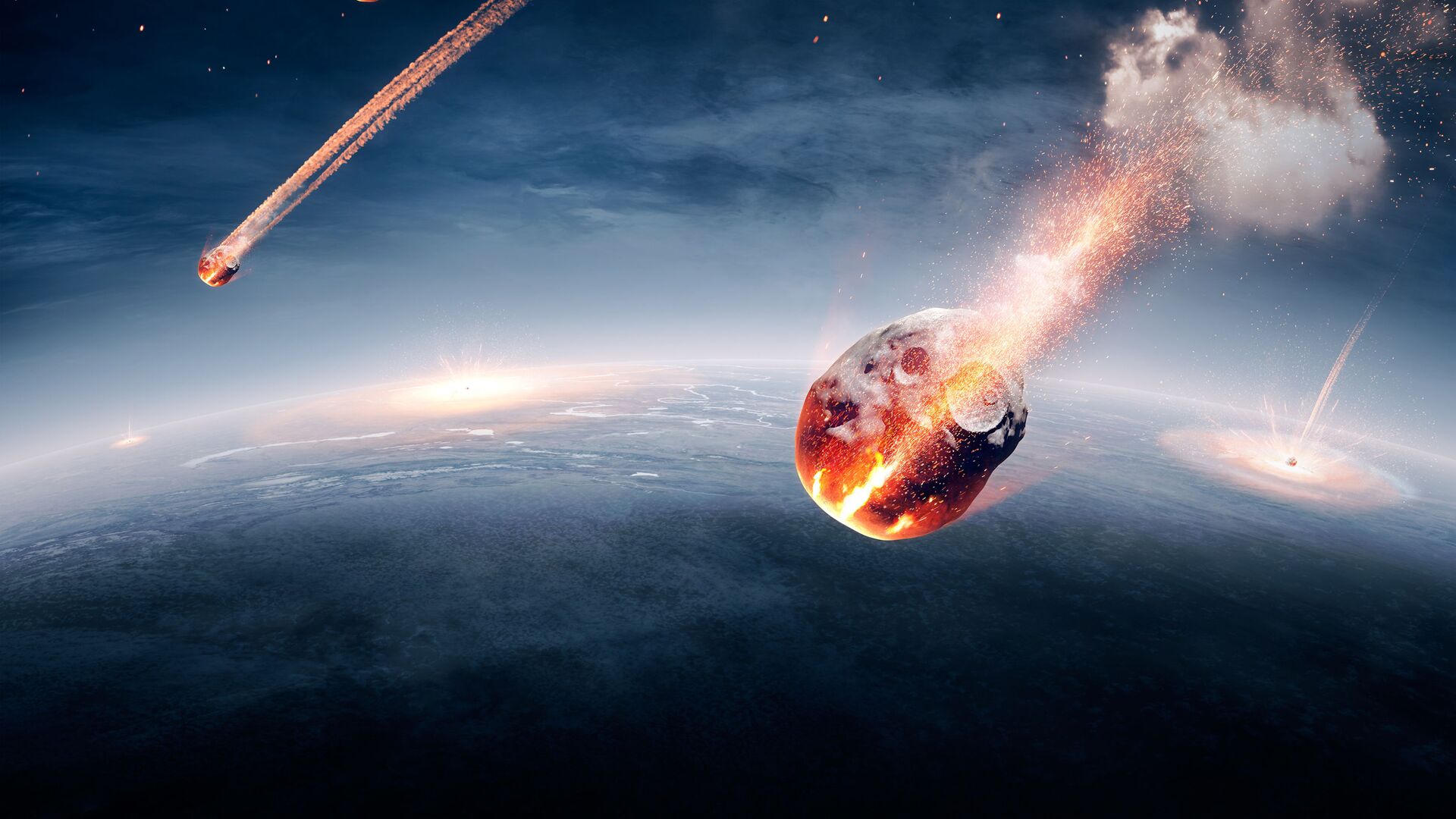https://sputnikglobe.com/20231202/meteorites-unveiled-as-early-earths-nitrogen-cosmic-couriers-1115338974.html
Meteorites Unveiled as Early Earth's Nitrogen Cosmic Couriers
Meteorites Unveiled as Early Earth's Nitrogen Cosmic Couriers
Sputnik International
The study shed light on the poorly understood transportation of nitrogen-rich materials to Earth's orbital region, potentially influencing the emergence of life on our planet.
2023-12-02T00:10+0000
2023-12-02T00:10+0000
2023-12-02T00:08+0000
beyond politics
science & tech
solar system
earth
meteorite
space
space exploration
https://cdn1.img.sputnikglobe.com/img/104709/73/1047097306_0:296:3050:2012_1920x0_80_0_0_0b50ae6b28b64a8c0760b910fc29ac8f.jpg
The latest study, titled "Influx of nitrogen-rich material from the outer Solar System indicated by iron nitride in Ryugu samples," explores the intriguing possibility that the nitrogen compounds transported near Earth, particularly ammonium salts, played a crucial role in the formation of life on our planet.Utilizing electron microscopy, researchers closely examined Ryugu samples, revealing tiny minerals composed of iron and nitrogen (iron nitride: Fe4N) on their surfaces. The breakthrough came when the scientists proposed that micrometeorites, carrying ammonia compounds, collided with Ryugu.These collisions triggered chemical reactions on magnetite, a key component of the asteroid's composition, leading to the formation of iron nitride.Lead author Toru Matsumoto, an assistant professor at Kyoto University, explained that the iron nitride was observed on the surface of magnetite, which undergoes changes when exposed to the harsh space environment.The loss of oxygen atoms from the magnetite's surface, caused by solar wind and micrometeorite impact, results in the formation of metallic iron. This iron readily reacts with ammonia, creating ideal conditions for the synthesis of iron nitride.The findings were published in Nature Astronomy journal.
https://sputnikglobe.com/20231201/celestial-odd-couple-overweight-planet-defies-cosmic-norms-by-orbiting-tiny-host-star-1115337094.html
solar system
earth
Sputnik International
feedback@sputniknews.com
+74956456601
MIA „Rossiya Segodnya“
2023
News
en_EN
Sputnik International
feedback@sputniknews.com
+74956456601
MIA „Rossiya Segodnya“
Sputnik International
feedback@sputniknews.com
+74956456601
MIA „Rossiya Segodnya“
nitrogen, nitrogen on earth, earth's orbital region, waht can meteorites carry, waht can meteorites do
nitrogen, nitrogen on earth, earth's orbital region, waht can meteorites carry, waht can meteorites do
Meteorites Unveiled as Early Earth's Nitrogen Cosmic Couriers
A team of international researchers, led by Kyoto University and including scientists from the University of Hawai'i at Mānoa, has discovered that micrometeorites from distant icy celestial bodies in the outer solar system were likely responsible for ferrying essential nitrogen compounds to the early Earth.
The latest study, titled "Influx of nitrogen-rich material from the outer Solar System indicated by iron nitride in Ryugu samples," explores the intriguing possibility that the nitrogen compounds transported near Earth, particularly ammonium salts, played a crucial role in the formation of life on our planet.
Ryugu, a small asteroid orbiting the sun, became the focus of the research as the Japan Aerospace Exploration Agency's Hayabusa 2 spacecraft brought back samples from its surface in 2020.
Rich in carbon and marked by significant space weathering, Ryugu offered scientists a unique opportunity to investigate the cosmic origins of materials near Earth's orbit.
Utilizing electron microscopy, researchers closely examined Ryugu samples, revealing tiny minerals composed of iron and nitrogen (iron nitride: Fe4N) on their surfaces. The breakthrough came when the scientists proposed that micrometeorites, carrying ammonia compounds, collided with Ryugu.

1 December 2023, 22:34 GMT
These collisions triggered chemical reactions on magnetite, a key component of the asteroid's composition, leading to the formation of iron nitride.
Lead author Toru Matsumoto, an assistant professor at Kyoto University, explained that the iron nitride was observed on the surface of magnetite, which undergoes changes when exposed to the harsh space environment.
The loss of oxygen atoms from the magnetite's surface, caused by solar wind and micrometeorite impact, results in the formation of metallic iron. This iron readily reacts with ammonia, creating ideal conditions for the synthesis of iron nitride.
"Our recent findings suggest the possibility that a greater amount of nitrogen compounds than previously recognized was transported near Earth, potentially serving as building blocks for life on our planet," states Hope Ishii, co-author and affiliate faculty at the University of Hawai'i at Mānoa.
The findings were published in
Nature Astronomy journal.



